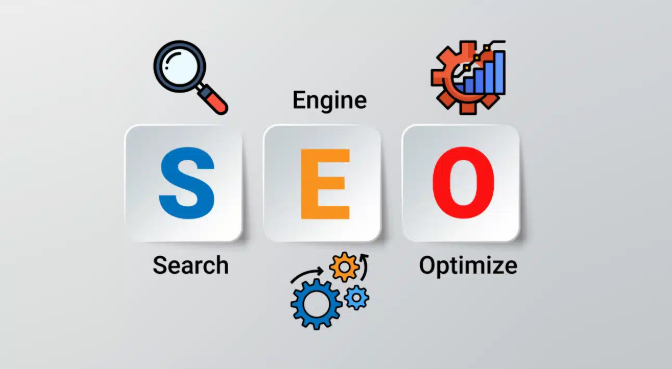SEO is a long-term strategy, and measuring its success requires tracking the right performance metrics. Without proper evaluation, you may invest time and effort without seeing tangible results. Whether you manage your own SEO or work with an SEO agency, understanding these key performance indicators (KPIs) is essential for sustained growth. Below are the most crucial SEO metrics that define success.
Organic Traffic Growth
The primary goal of SEO is to increase organic traffic. Monitoring your website’s organic search traffic using tools like Google Analytics helps you understand whether your SEO efforts are driving more visitors to your site. A consistent upward trend in organic traffic indicates that your site is ranking for valuable keywords and attracting relevant users.
Keyword Rankings
Your position in search engine results pages (SERPs) plays a critical role in driving traffic. Tracking keyword rankings over time helps determine whether your SEO strategy is effective. You should monitor both primary keywords and long-tail variations, as they contribute to overall visibility. Tools like Ahrefs, SEMrush, and Google Search Console can help track keyword performance.
Click-Through Rate (CTR)
CTR measures the percentage of searchers who click on your website after seeing it in the search results. A low CTR means that even if your site ranks well, it may not be appealing enough to attract clicks. Optimizing meta titles and descriptions, using compelling calls to action, and incorporating structured data can improve CTR.
Bounce Rate
Bounce rate reflects the percentage of visitors who leave your site after viewing only one page. A high bounce rate suggests that users aren’t finding what they expected or that your content isn’t engaging enough. Improving on-page content, enhancing page load speed, and providing clear navigation can reduce bounce rates and increase user engagement.
Dwell Time
Dwell time measures how long a user stays on your page before returning to the search results. Longer dwell times suggest that your content is informative and engaging. High-quality, in-depth content that addresses user intent can improve this metric.
Conversion Rate
SEO isn’t just about traffic; it’s about turning visitors into customers. Conversion rate measures how many visitors complete a desired action, such as signing up for a newsletter, filling out a contact form, or making a purchase. Tracking conversion rates helps assess the effectiveness of your content and landing pages in guiding users toward your business goals.
Pages Per Session
The number of pages a user views during one session indicates how engaging your website is. A higher number of pages per session suggests that users are exploring more of your content, which is a positive SEO signal. Internal linking, relevant content recommendations, and an intuitive site structure can improve this metric.
Mobile Usability
With mobile-first indexing, ensuring your website is mobile-friendly is crucial. Google’s Mobile Usability report in Search Console can help identify issues like text readability, tap targets, and loading speeds. A mobile-friendly website improves user experience and enhances search rankings.
Page Load Speed
Site speed affects both user experience and SEO rankings. Slow-loading pages lead to higher bounce rates and lower engagement. Google PageSpeed Insights can help identify performance bottlenecks. Optimizing images, leveraging browser caching, and using a content delivery network (CDN) can improve site speed.
Backlink Profile
Backlinks remain a crucial ranking factor in SEO. Monitoring your backlink profile helps assess the quality and quantity of external sites linking to your pages. A strong backlink profile from authoritative sources enhances your credibility and boosts rankings. Tools like Ahrefs, Moz, and SEMrush can help analyze your backlink strategy.
Core Web Vitals
Google’s Core Web Vitals focus on user experience metrics, including loading performance, interactivity, and visual stability. Optimizing for Largest Contentful Paint (LCP), First Input Delay (FID), and Cumulative Layout Shift (CLS) ensures a smoother browsing experience, positively impacting rankings.
Indexing Status
If search engines can’t index your pages, they won’t appear in search results. Regularly checking your indexing status in Google Search Console helps ensure that important pages are accessible and properly indexed. Fixing crawl errors, improving site structure, and submitting updated sitemaps can help maintain optimal indexing.
Local SEO Performance
For businesses targeting local customers, tracking local SEO metrics is essential. Monitor your Google Business Profile performance, local keyword rankings, and customer reviews. Ensuring consistent name, address, and phone number (NAP) information across directories enhances local search visibility.
Return on Investment (ROI)
Ultimately, SEO success should contribute to business growth. Tracking revenue generated from organic traffic helps determine whether your SEO efforts are profitable. Comparing SEO costs to generated leads and conversions provides insights into overall effectiveness.
Conclusion
Perfomance Based SEO success isn’t defined by one single metric—it’s a combination of multiple factors that influence your online visibility and business growth. Regularly tracking these key performance indicators ensures that your SEO strategy remains effective and adaptable to algorithm updates. Whether you’re managing SEO yourself or partnering with an SEO agency, these metrics will guide your optimization efforts and help achieve long-term success.









